Droughts, floods, storms, forest fires ... have become daily challenges for mankind. Climate-related natural disasters are increasing rapidly every year. Extreme weather events destroy lives, lead to massive crop failures and the destruction of agricultural land.
We need new self-sustaining solutions that produce environmentally friendly food but do not suffer from rapidly changing temperatures. Underwater greenhouses could play an important role in future. The concept offers potential for vegetable cultivation, especially in regions of the world that already suffer from drought but have access to the sea.
Inspired by the botanical research of Nemo's Garden on the Italian Riviera, I designed a vision and a visual case study for underwater agriculture. The focus is on the systemic structure and scope of the system.
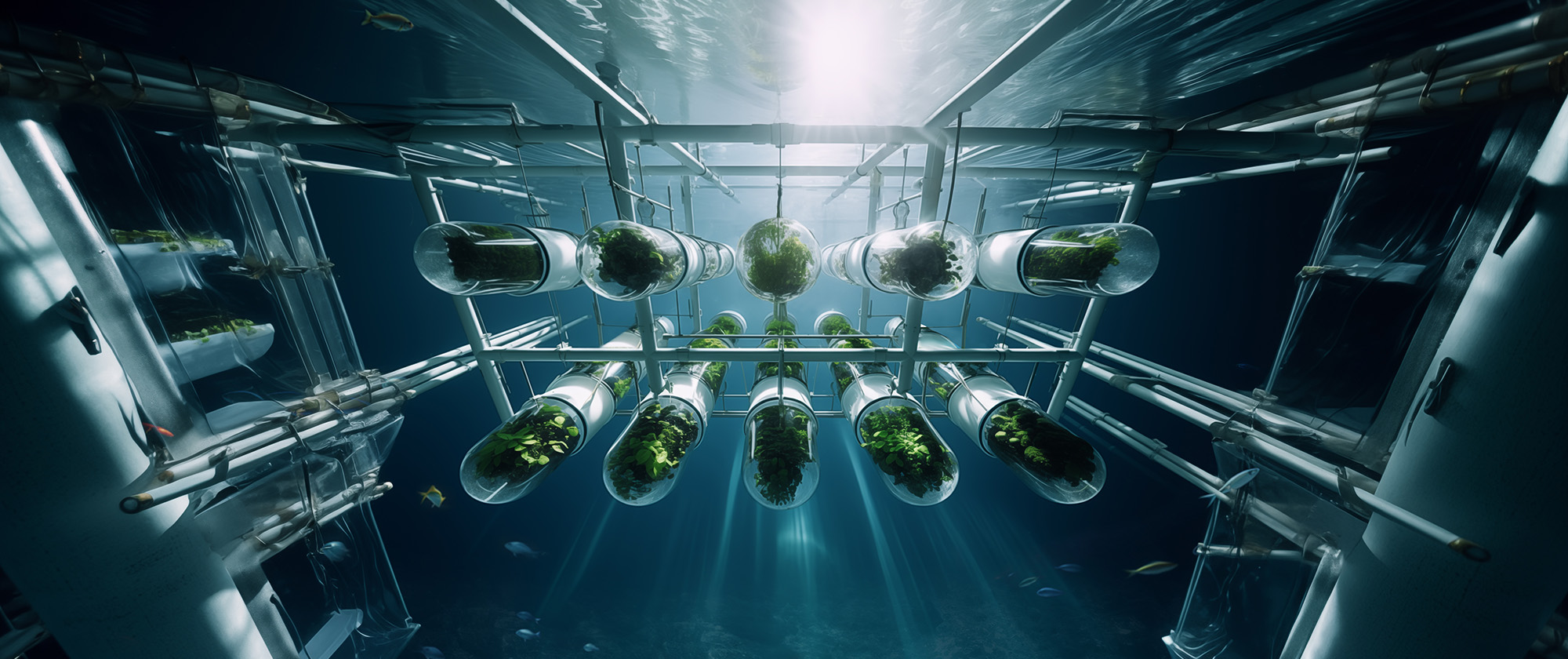



Circular ecosystem
The idea combines the technical possibilities of vertical farming with a self-contained and self-sustaining underwater biosphere.
Sunlight penetrates the 5-10 meter deep, transparent underwater space. The energy is sufficient for photosynthesis and the electrical operation of the system. Thanks to the almost stable water temperature and the thermal fluctuations within the biosphere between day and night, the seawater condenses in the biosphere.
This clean fresh water is collected, enriched with minerals, combined with fertilizer from algae and fed into the hydroponic system. As the system is protected from external influences, no pesticides are required.



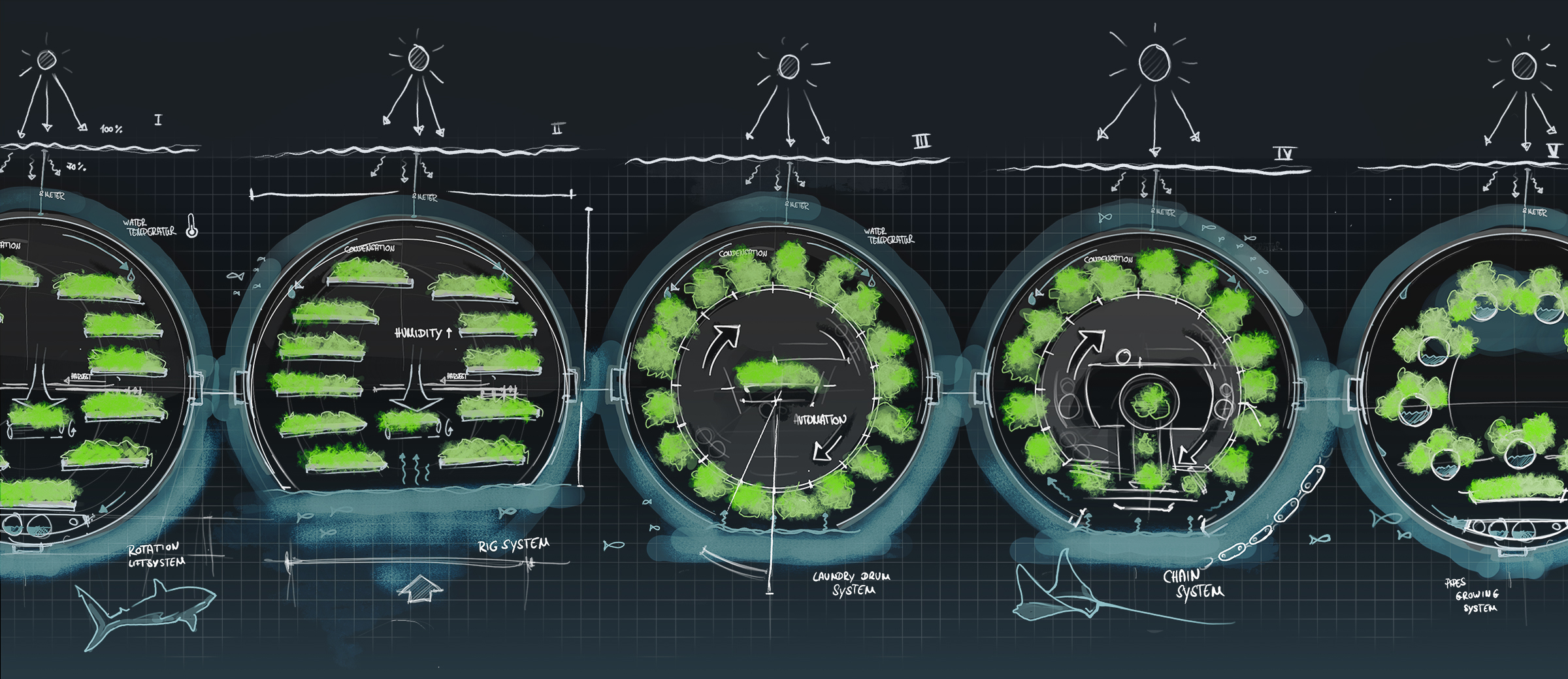


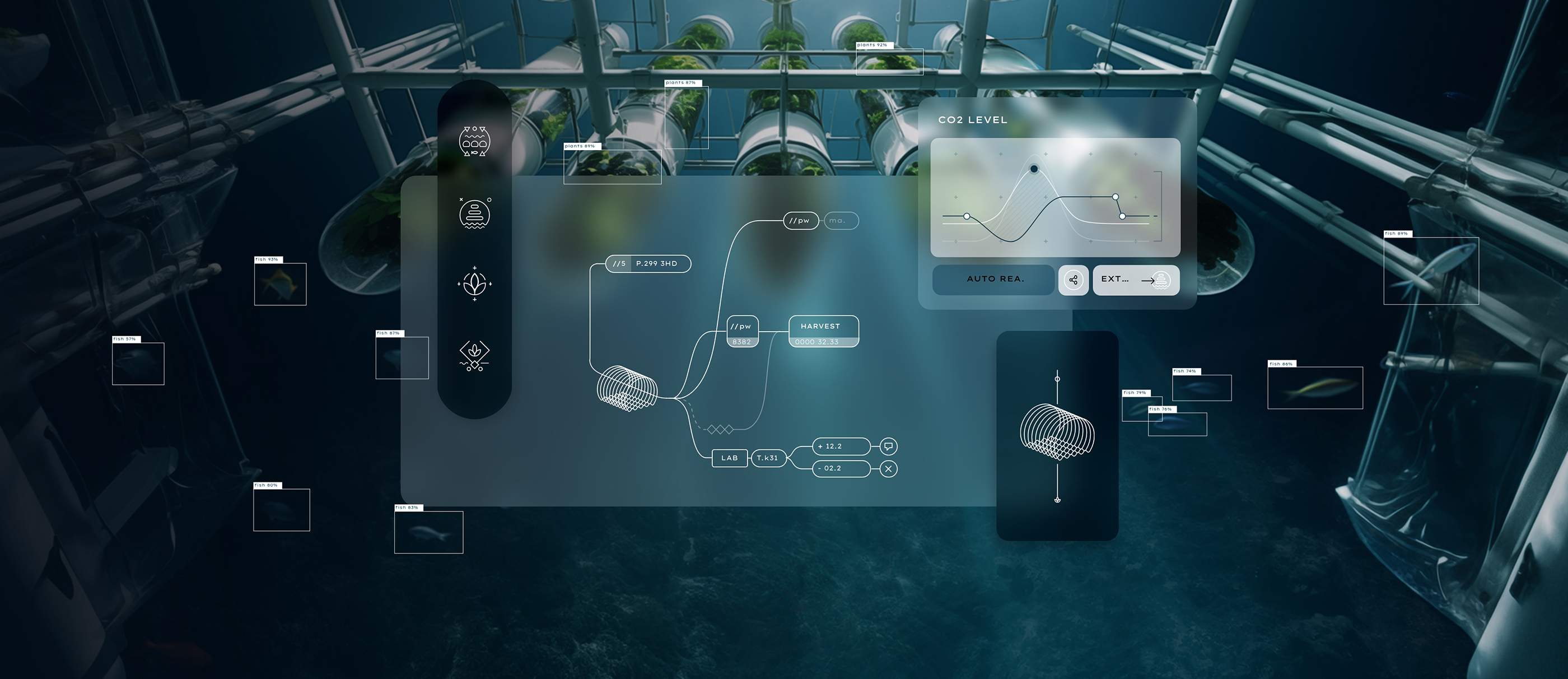


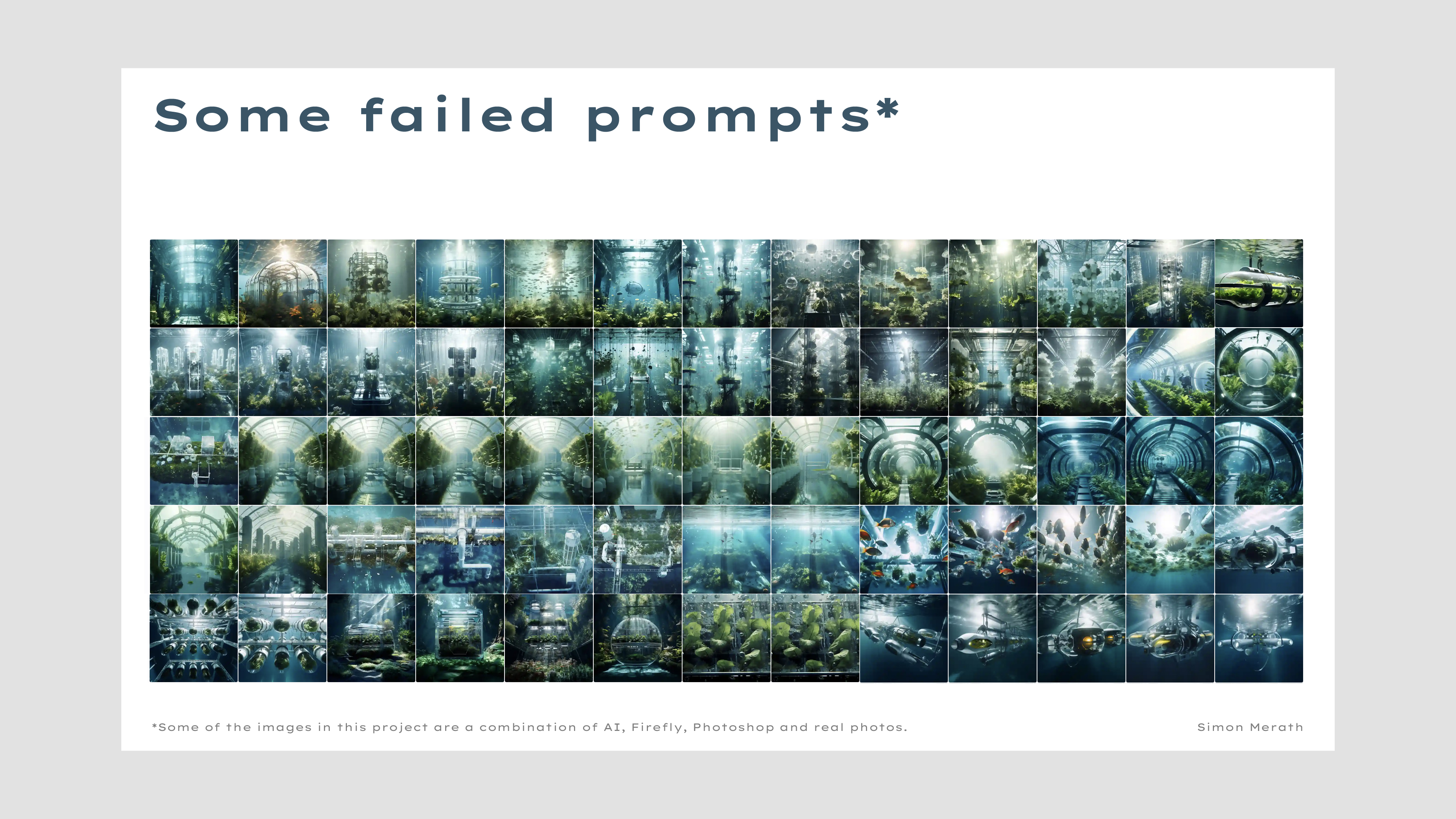

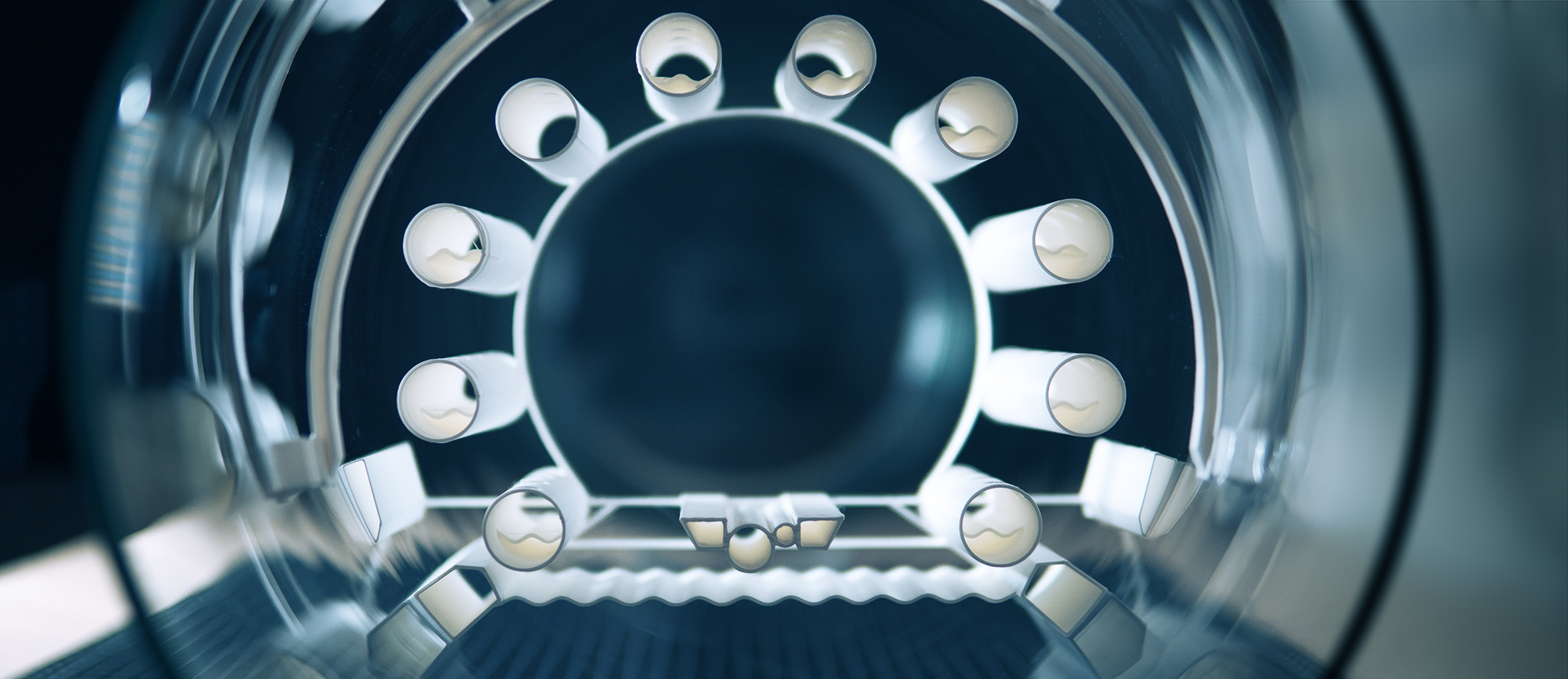

Droughts, floods, storms, forest fires ... have become daily challenges for mankind. Climate-related natural disasters are increasing rapidly every year. Extreme weather events destroy lives, lead to massive crop failures and the destruction of agricultural land.
We need new self-sustaining solutions that produce environmentally friendly food but do not suffer from rapidly changing temperatures. Underwater greenhouses could play an important role in future. The concept offers potential for vegetable cultivation, especially in regions of the world that already suffer from drought but have access to the sea.
Inspired by the botanical research of Nemo's Garden on the Italian Riviera, I designed a vision and a visual case study for underwater agriculture. The focus is on the systemic structure and scope of the system.




Circular ecosystem
The idea combines the technical possibilities of vertical farming with a self-contained and self-sustaining underwater biosphere.
Sunlight penetrates the 5-10 meter deep, transparent underwater space. The energy is sufficient for photosynthesis and the electrical operation of the system. Thanks to the almost stable water temperature and the thermal fluctuations within the biosphere between day and night, the seawater condenses in the biosphere.
This clean fresh water is collected, enriched with minerals, combined with fertilizer from algae and fed into the hydroponic system. As the system is protected from external influences, no pesticides are required.









Droughts, floods, storms, forest fires ... have become daily challenges for mankind. Climate-related natural disasters are increasing rapidly every year. Extreme weather events destroy lives, lead to massive crop failures and the destruction of agricultural land.
We need new self-sustaining solutions that produce environmentally friendly food but do not suffer from rapidly changing temperatures. Underwater greenhouses could play an important role in future. The concept offers potential for vegetable cultivation, especially in regions of the world that already suffer from drought but have access to the sea.
Inspired by the botanical research of Nemo's Garden on the Italian Riviera, I designed a vision and a visual case study for underwater agriculture. The focus is on the systemic structure and scope of the system.




Circular ecosystem
The idea combines the technical possibilities of vertical farming with a self-contained and self-sustaining underwater biosphere.
Sunlight penetrates the 5-10 meter deep, transparent underwater space. The energy is sufficient for photosynthesis and the electrical operation of the system. Thanks to the almost stable water temperature and the thermal fluctuations within the biosphere between day and night, the seawater condenses in the biosphere.
This clean fresh water is collected, enriched with minerals, combined with fertilizer from algae and fed into the hydroponic system. As the system is protected from external influences, no pesticides are required.








